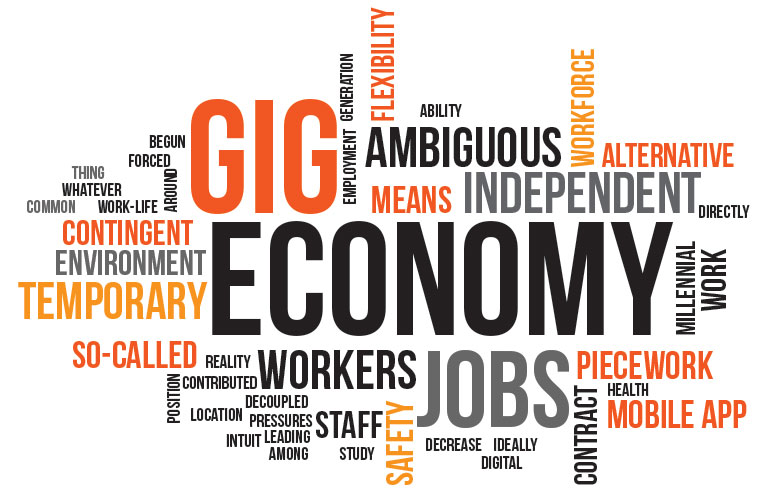One such change is extremely evident in the way people relate to their workplace and their expectations from employers and collaborators everywhere.
New technologies and better communications helped people everywhere during the pandemic, but it also taught them that there’s a different way of earning a living. The so-called gig economy includes independent contractors, freelancers, entrepreneurs, influencers, YouTubers, and other professionals who prefer a flexible work schedule and a chance to better work-life balance.
According to recent data, the gig economy grew by 33% in 2020, which meant it registered an 8.25x faster expansion than the US economy. As a result, around 34% of the US workers are now participants in this growth.
While some say the growth isn’t sustainable, and once companies call their people back in the office, many will give up their side gigs, the trends show a different story. Let’s have a look at the main reasons why people are so attracted by this way of working.
It’s Easy to Find Opportunities
Due to a wide range of freelance platforms (Freelancing, Upwork, Fiverr) and other gig work apps, it is now easier than ever to find work as a side gig or an individual project. Plus, it’s also easy to polish your skills due to sites that provide users access to high-quality lessons created by professionals (also gig workers) from all sorts of fields.
Not to mention that, if you have what it takes, you can make it as a social media influencer or YouTuber. Nowadays, you just need the right idea and skillset and the opportunities will show up.
It Brings a Series of Benefits
The lifestyle of a gig worker is flexible and mostly relaxed (if he/she has enough customers to pay the bills). Joking aside, people who swear by the gig economy want to spend more time at home, with the family, or have small children in their care (just an example).
By working on their own projects and deciding their own pace, they take control over their time and lives. Plus, if you are good, chances are you will be able to earn more than what you were paid as an employee. After all, you are the one who sets the prices, so the sky's the limit!
However, you should take into account that part of your earnings will go towards taxes and health insurance. Also, you are the one covering the costs with equipment, meetings with customers, office supplies, and more. So it’s best to weigh the pros and cons before deciding to give up on your 9-to-5.
The Most Common Types of Gigs
While many professionals can join the gig economy, the trends point towards a select few that are in demand right now.
Delivery Services
Due to the boom in online and grocery shopping services, the demand for delivery services has increased exponentially. While it’s true things are a bit calmer now, as everything opened up and people can do their own shopping, the trend is still going strong.
That’s because many people understand that having your groceries delivered or ordering online saves a lot of time and energy. Plus, you can also save some money since you won’t be tempted by other interesting-looking products in the store.
Housework & Handyman Services
As families had to bunk together, people found themselves in need of construction and repair services, babysitting services, cleaning, computer repair services, personal trainers, and more. All these are still incredibly lucrative lines of work and people can easily build a business out of their skills.
True, these are not the most glamorous jobs, but if you like tinkering with pipes and stuff and enjoy being your own boss, why not open a plumbing business?
Freelancing
This term covers a wide range of professions, but it’s most often attributed to young professionals (18 to 34 years old) who work on a computer. A freelancer can provide a wide range of services such as programming, web design, content writing, project management, social media management, photo editing, and so on.
Influencers
Social media influencers and YouTubers are great examples of modern days gig workers who found a way to do something they love. True, the competition is fierce and it’s difficult to carve a niche nowadays, but it shows that clever use of modern technology is extremely useful.
Plus, once they get to gather a solid community, they can work with brands and online marketing companies on various promotional campaigns. This type of activity may open the door to a different series of opportunities and collaborations, which is absolutely amazing.
Wrap Up
In summary, the gig economy is here to stay. Anyone who says otherwise is disconnected from the real world or doesn’t understand that not all people are meant to be employees.






